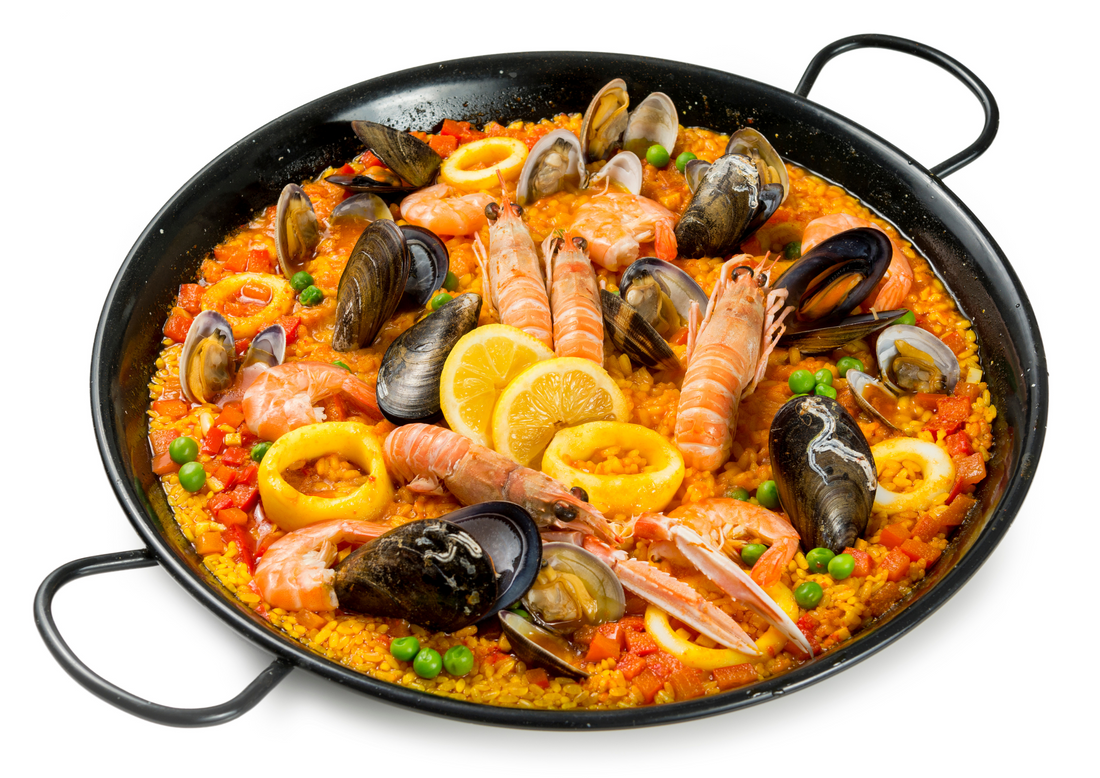
A Guide to Choosing The Best Rice for Paella
When it comes to making Spain’s most cherished dish, the authentic paella, the rice you choose will be the most important element. While the toppings and ingredients are crucial for flavor and presentation, the rice is what holds this unique dish together. So what type of rice is best for paella?
Gourmanity makes it their mission to search the globe and source out the finest local ingredients. Read on as we share the secret to choosing the best rice for paella.
The Best Paella Rice
What rice is best to use for paella? The most commonly used and highly recommended rice for paella is bomba rice, a variety grown primarily in the beautiful Valencia region of Spain. This exquisite rice is known for its ability to absorb a large amount of liquid — up to three times its weight — without breaking apart. Bomba rice transforms the dish by retaining its firm texture and individual grains, allowing it to soak in all the flavors of saffron, paprika, and the smoky stock that are key to a great paella. Even under high heat, bomba rice for paella stays firm and separate, ensuring that each bite has the right balance of texture and flavor. This makes it the ideal choice for both traditional and modern paella recipes.
Alternative Rice for Paella
While bomba rice is the top choice, there are other varieties of commonly used paella rice types in Spain. These include:
- Senia Rice: This variety is grown in Valencia and is known for its creamy, delicate finish. It absorbs flavors well, resulting in a soft texture that complements the other ingredients in the traditional paella.
- Bahia Rice: Another variety from Valencia, bahia rice also absorbs liquid well and creates a smooth, slightly creamy luscious texture that works well in paella.
- Calasparra Rice: Grown in the mountain regions of Spain, calasparra rice has a slower growing process, which results in firm grains that are perfect for slow-cooked dishes. This rice variety is ideal for seafood or meat-based paellas, holding its shape while delivering a satisfying, firm, and flavorful texture.
- Albufera Rice: Another high-quality short-grain rice, albufera rice is known for its ability to absorb bold flavors while maintaining a tender texture without becoming mushy.
What Rice Should You Avoid Using in Paella?
Not all rice varieties are suited for paella. We recommend avoiding the following:
- Arborio Rice: Known for its use in risotto, arborio rice is too starchy and sticky for paella. It will lose its shape and create a creamy, mushy texture that doesn’t work for this dish.
- Jasmine or Basmati Rice: These long-grain varieties are fragrant but lack the ability to absorb flavors in the way that paella requires. They also tend to remain too fragile and separate, rather than absorbing the rich broth.
Where to Find Authentic Paella Rice
To make a deliciously authentic paella, the type of rice you use should be high-quality. Specialty Spanish markets or gourmet online stores like Gourmanity, offer a selection of premium paella rice varieties, including bomba, senia, and calasparra. Look for rice that has been grown in Spain’s rice-growing regions, such as Valencia or Calasparra, for the richest flavor and texture.
When preparing paella, you want to aim for around 100 grams of rice per person. This will ensure that the rice has enough room to absorb the flavors without overcrowding the paella pan.
Tips for Cooking the Perfect Paella
|
✅ Choose the Right Rice |
✅ Use a Wide, Shallow Pan |
✅ Mind the Liquid Ratio |
|
❌ Avoid Long-Grain Rice |
❌ Don’t Stir After Adding the Liquid |
❌ Don’t Overcrowd the Pan |
Use Only the Best Rice for Paella
For the traditional paella experience, using the highest quality, flavor-filled rice is crucial. At Gourmanity, we globally source the finest selection and best rice for paella, so you can bring the authentic flavors of Spain to your kitchen. Whether you’ve chosen the famed bomba rice or traditional calasparra, order today and bring your paella to the next level.
About The Author:
Leah is Gourmanity’s expert taster, ensuring every product delights the palate and exceeds expectations. With a refined sense of flavor and a passion for gourmet foods, Leah plays a key role in selecting only the best for our collection. Outside the tasting room, Leah enjoys hosting dinner parties, exploring the world through its cuisines, and writing culinary blog posts.